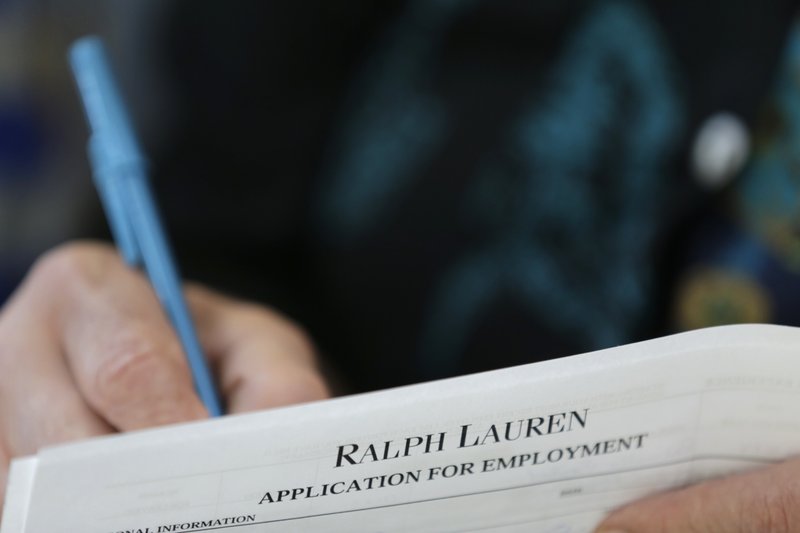WASHINGTON -- More Americans applied for unemployment benefits last week, but the level of claims remains low enough to suggest that most workers enjoy job security.
The Labor Department said Thursday that weekly U.S. applications rose by 10,000 to a seasonally adjusted 268,000 in the week that ended Saturday. The four-week average, which is less volatile, was unchanged at 267,000.
Unemployment claims are a proxy for layoffs. They have remained below 300,000 for 69 straight weeks, the longest such streak since 1973.
The number of Americans receiving unemployment benefits stood at 2.12 million in the week ending June 18, down nearly 7 percent from a year earlier.
Hiring has slowed this spring. Employers added just 38,000 jobs last month, the fewest in more than five years.
The low level of unemployment claims suggests that the weak numbers on hiring in May "overstated any underlying softening in the labor market," Daniel Silver, an economist at JPMorgan, wrote in a research note.
Even if they are not adding many workers, employers are still reluctant to reduce their staffs. The unemployment rate fell in May to 4.7 percent, lowest in more than eight years.
Companies are reluctant to fire workers as skilled and experienced employees become difficult to attract in a tighter labor market. Dismissals that are still hovering near four-decade lows signal a recent slowdown in payrolls may be short-lived as household spending continues to fuel the economy.
"We're not seeing any huge increase in job losses out there," said Scott Brown, chief economist at Raymond James Financial Inc. in St. Petersburg, Fla., who correctly forecast the number of claims. "It's consistent with further improvement in the labor market."
The U.S. economy got off to a slow start this year, growing at a weak annual pace of 1.1 percent from January through March. Economists expect growth to pick this quarter, driven by healthy consumer spending.
Still, the Federal Reserve has been reluctant to declare the economy completely healthy, deciding at all four meetings this year that conditions were not yet strong enough to justify higher interest rates. Britain's June 23 decision to leave the European Union has rattled markets and created uncertainty about the global economic outlook.
While there was nothing unusual in last week's figures, claims were estimated for Georgia, according to the Labor Department. Filings, on an unadjusted basis, rose the most in New Jersey and California. Pennsylvania showed the largest weekly decline.
Information for this article was contributed by Paul Wiseman of The Associated Press and by Shobhana Chandra of Bloomberg News.
Business on 07/01/2016
